The 9th
LaureatePainting
Gerhard Richter
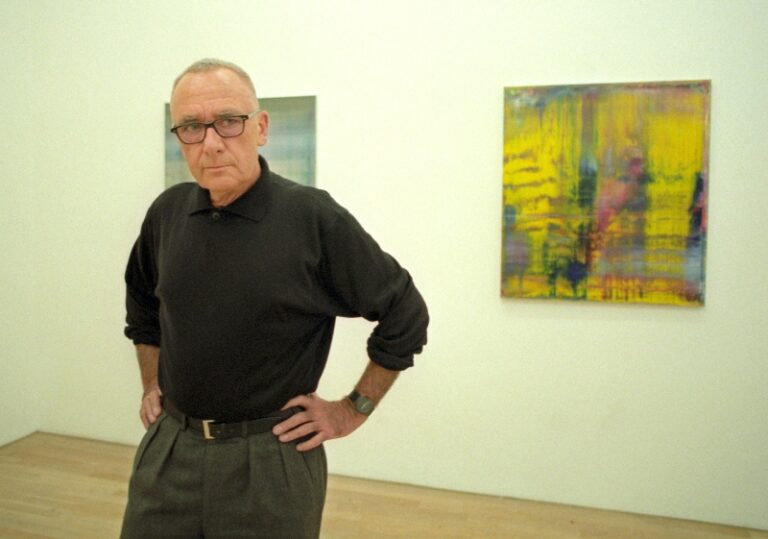
Gerhard Richter is the one of the most conceptual of painters,delivering work of great technical virtuosity in a controlled,wholly impersonal way. In 1973 he wrote ‘I have always detested subjectivity’,echoing the calculated indifference of Marcel Duchamp. His photo-based paintings,meticulously painted and then blurred images,point to a debate between painting and photography; his ‘colour chart’ paintings imply a debate between painting and the act of painting and his subject matter is often a debate between reality and painting. All these works are engaged somewhere between truth and representation. In all Richter’s work there is never a question of painting being the product of gratuitous self-expression,however seductive its surface qualities or apparently emotive its subject matter.
Biography
The art of Gerhard Richter has sprung from complex roots. Having worked in advertising and scene painting,he studied in Dresden at the High School for Fine Art in the 1950s. Dresden was then in communist East Germany,and Richter had to find his way in a world in which painting meant working within either the classical repertoire or politically engaged socialist realism. But in 1961 he managed to transfer to the Düsseldorf academy,at a time when art in West Germany was embarking on radical position-taking after years of hesitation following the end of the Second World War. Having worked principally as a figurative painter,free now to test his concept of representation against the work of senior western contemporaries such as Bacon,Giacometti and Dubuffet,Richter quickly found his own field of operations. His 1963 collaboration with Sigmar Polke and Konrad Lueg in a ‘Demonstration on behalf of Capitalist Realism’ signalled their reaction against socialist realism and was taken to imply affiliation to the pop art developing in America and Britain. In fact,none of them committed himself to pop principles and methods: they were expressing an acceptance of the real world and asserting the freedom to adopt,sample or reject its artistic fashions and inheritance in a spirit of ironic exploration.
By 1966 Richter had arrived at his mature practice and theoretical premise. While his best known contemporaries were waging cultural politics and self-consciously revisiting the German modernist inheritance of expressionism,Richter approached painting via a philosophical investigation into the relativity of our experience both of art and of reality. In his Notes of 1973 he wrote ‘I have always detested subjectivity’,boldly sinning against what had powered German art and against the general postwar enthusiasm for expressive painting and sculpture,figurative or abstract. He wanted to excise all sign of individual emotion,touch,even genius: in making his paintings he wanted ‘to react merely like a machine,extremely susceptible,indifferent,dependent’. If ‘susceptible’ in this case can be seen as fitting late nineteenth-century symbolism and renewed interest in it in the sixties,and ‘indifferent’ refers to Marcel Duchamp’s decisions made from aesthetic indifference,‘dependent’ remains a sting in the tail of his statement. Artists are expected to claim independence. Richter chose to commit his art to the service of art-seeing and art-thinking,not to innovating methods or styles nor to developing new themes except those of not developing new themes and of not reflecting current ideologies.
In 1966 he painted Ema (Nude on a Staircase),a reference to Duchamp’s famous Nude of 1912,though Richter’s representation is what is curtly called naturalistic,in this instance openly photographic in character and is thus what viewers think of as truthful. In the same year,that also saw the full emergence and baptism of American minimalist painting and sculpture,he painted a geometrical abstract composition Two Greys as well as the first of his Colour Chart paintings that resemble printed colour charts from paint shops. Such paintings required elaborate preparation and finely controlled,wholly impersonal execution. Richter’s output remains limited because of the complex processes his kinds of painting demand from him,even when the results appear simple. Paintings such as 1024 Colours,1973,for example,were succeeded in 1974 by large monochrome canvases in a subtly modulated grey,requiring several successive coats of translucent oil paint.
During this period he also painted a series of portraits of eminent cultural figures – 48 Portraits,1972 – as well as series of equally photo-based clouds and a sequence of increasingly abstract variations of an Annunciation after Titian. At this time also he initiated his long series of non-geometrical abstracts,elaborately gestural at first in ways that evade the issue of personal expression,and then increasingly formal for all their lavishness,with paint applied and removed in actions parallel to the vertical and horizontal coordinates. Many of these paintings were worked with the broad brushes associated with art informel and abstract expressionism; since the eighties he has mixed paint on large spatulas to smear it across the support and,in some sequences,to scrape paint off the still-wet surface.
The 1980s also saw him appropriating symbolic imagery in delicately painted photo-based images of candles or apples or skulls,all familiar to the long history of religious art. Before such paintings one begins to doubt his indifference: are these motifs without affective value to him? Looking at his photo-based representations of mother and baby,S. with Child,1995,or of his daughter Betty,1988,one cannot fail to sense his attachment and one’s own. A similar reaction is prompted by 18. Oktober 1977,1988,his cycle of paintings that address the death in prison in 1977 of members of the Red Army Faction. Richter declared that these paintings did not just record an event but were painted from a viewpoint of ‘compassion and grief’ and were ‘an expression of speechless emotion’. Richter’s paintings continue to make tangible what is and remains unclear.
Norbert Lynton
Chronology
The daily practice of painting. writings and interviews 1962-1993 / Gerhard Richter ; edited by Hans-Ulrich Obrist ; translated from the German by David Britt. London : Thames and Hudson. Anthony d'Offay Gallery,1995.
Mute painting. the late abstraction of Gerhard Richter / Jonathan Field. University of Lancaster,1998.
Gerhard Richter/ Gerhard Richter ; with essays by Martin Hentschel and Helmut Friedel and a catalogue raisonne of paintings from 1993 to 1998 London : Anthony d'Offay Gallery,1998
Gerhard Richter. abstract paintings / Gerhard Richter. London : Whitechapel Art Gallery,1979.
-
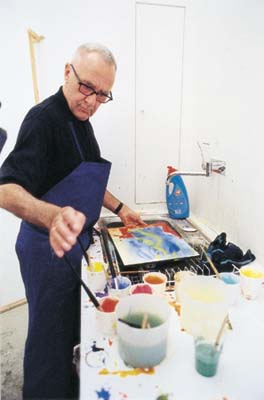
Richter in his studio, 1997
-
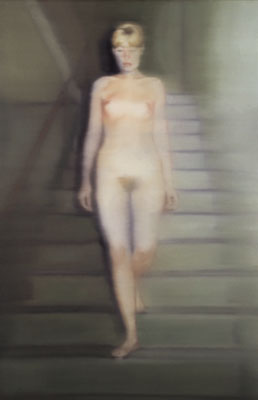
Ema, Akt auf einer Treppe, 1965
-
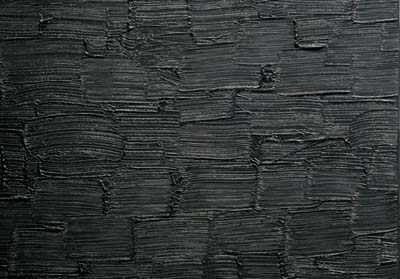
Grau, 1973
-
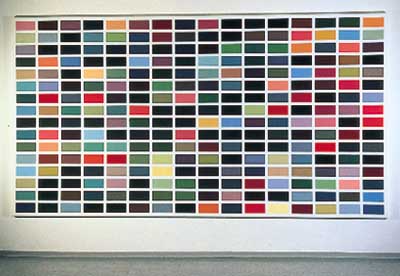
256 Farben, 1974-84
-
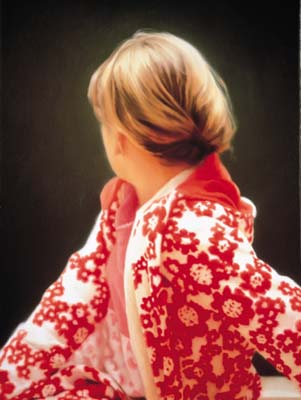
Betty, 1988
-
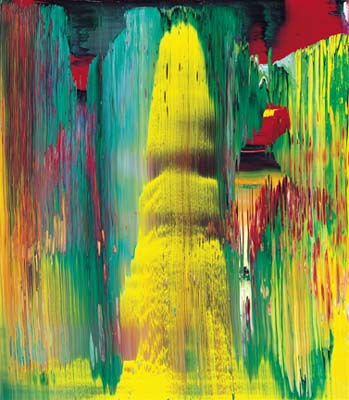
Abstraktes Bild, 1997

